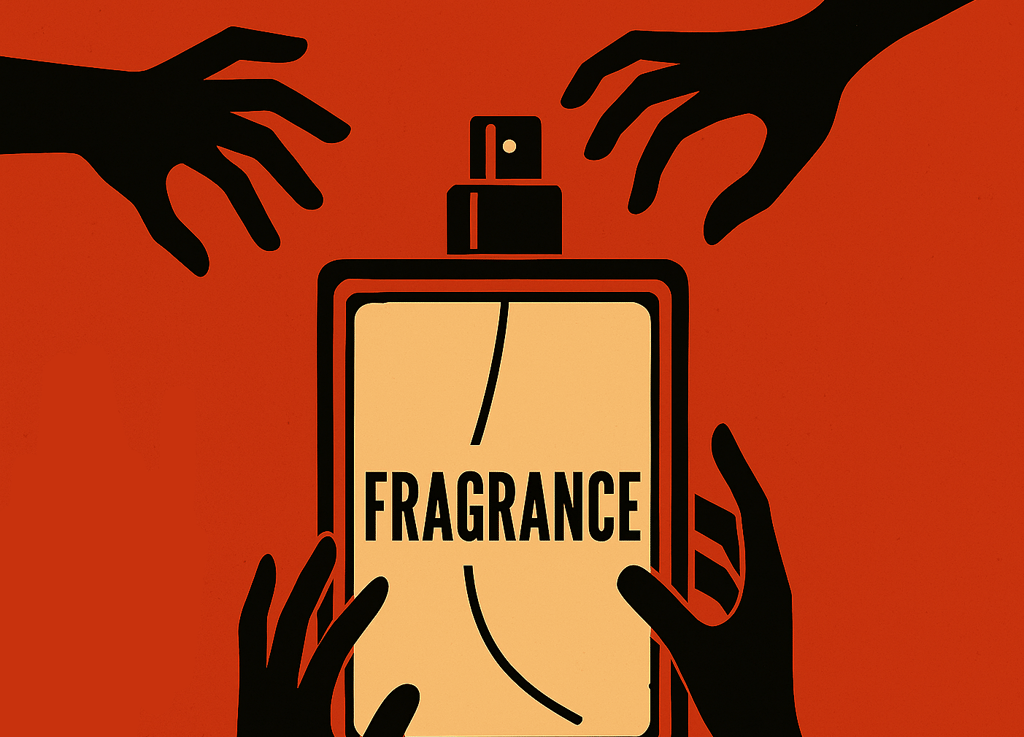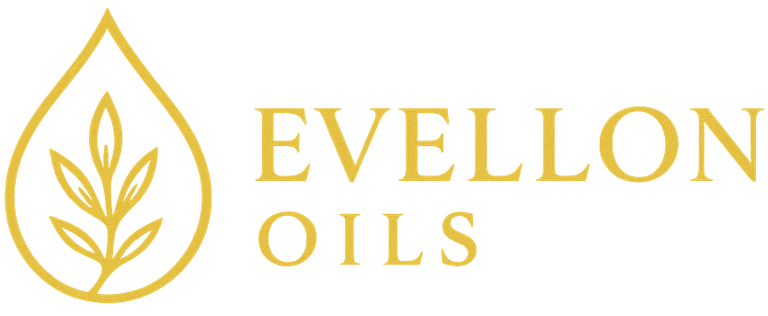The Secret Companies That Control What You Smell
Most people are unaware that any fragrance we smell is probably sourced from a select few companies that control the market
THE SCENT DAILY
6/16/20256 min read


We buy candles because a label promises “Sea Breeze,” choose shampoos that whisper “Cashmere Rose,” and book hotels whose lobbies feel and smell cleaner than our own living rooms. Yet very few shoppers can name the handful of behind-the-scenes giants that decide exactly what those experiences smell like—and when the scent will change. We have researched and investigated these companies and scanned financial filings to map the power structure of an industry worth almost $29 billion today and heading for more than $42 billion by 2032.
A Market Run by Four Names Most People Never Hear
At the top sits Givaudan, a Swiss firm whose Fragrance & Beauty division alone generated CHF 7.4 billion in 2024. This is roughly the GDP of a small island nation. The next rungs belong to DSM-Firmenich (formed when Dutch nutrition powerhouse DSM absorbed Swiss perfume house Firmenich in a €21 billion deal), U.S-based IFF, and Germany’s Symrise. Together these four control just over half of every perfume oil, candle blend, laundry-softener accord, and “signature hotel scent” sold on earth. By revenue they dwarf the dozens of artisanal houses that dominate social-media chatter. Essentially, almost every blend of essential oil or fragrance that you buy from the market, whether small local brands or luxury atomizers, are built from the same basic building blocks that these aforementioned four companies supply.
The barrier to entry is chemical know-how. Turning tonka beans or cardamom pods into stable, IFRA-compliant aroma molecules requires pilot plants that meet pharmaceutical-grade safety. Givaudan alone operates nine proprietary “S-Tec” reactors able to coax aromas from bio-fermented feedstocks the way craft brewers coax esters from yeast. Few venture investors sign cheques for that cap-ex. It’s simply easier to white-label Givaudan’s “Jungle Essence™ Vanilla” or IFF’s “AmberCore™.” Once a customer sniffs that prototype, switching suppliers later means reformulating packaging, safety data sheets, even advertising claims. So, the first supplier in the door tends to stay for decades.
Patents as Moats, Not Just Paperwork
We pulled a sample of fragrance patents filed since 2010 and found that more than 60 percent name one of the Big Four as owner or co-owner. Molecules such as Givaudan’s Paradisone™ (a cleaner cousin to jasmine) or Symrise’s Velvione™ (synthetic deer musk) remain off limits to rivals for up to twenty years. That exclusivity turns a simple supply contract into a licensing deal: if a startup candle brand wants a note that smells like warm, just-ironed cotton, it often rents the molecule rather than buying it. Drop the license and the scent of that candle is going to change character overnight.
For example, walk into a Westin anywhere on the planet and you’ll meet the same white-tea accord no matter if you’re in Boston or Bali. Once the scent becomes part of Westin’s brand equity, switching suppliers is as risky as changing the mattress of the hotels. The supply contract thus becomes a soft form of lock-in, guaranteeing the aroma supplier revenue for as long as guests keep checking into Westin.
Controlling Raw Materials at the Source
DSM-Firmenich’s 2023 integrated report lists plantations for patchouli in Indonesia and a captive vetiver farm in Haiti. This arrangement lets the company own the harvest, the distillation, and the branding on the final bottle. Symrise maintains cooperatives for pink pepper in Madagascar under a “sharing beauty with communities” label that wins ESG points while keeping competitors out of the supply. When climate shocks hammer harvests, the majors push contract farmers to reroute raw stock to their own distilleries first, leaving smaller buyers scrambling for whatever is left on the spot market.
For example, in 2022, Cyclone Seroja tore across Indonesia’s Celebes Sea and clipped the eastern coast of Sulawesi, the island that grows more than half of the world’s patchouli. Crop analysts estimate the storm cut Indonesian output by ≈19 % and pushed spot prices to US $240 per kg within six weeks. For dozens of indie perfume labels this was an existential blow: patchouli sits in roughly half of all modern blends, and smaller firms buy on the month-to-month market.
DSM-Firmenich barely flinched. According to its 2023 Integrated Annual Report the company already held long-term contracts with three UEBT-verified farmer clusters in Central Sulawesi. These contracts include agronomy training, floor prices, and first-refusal rights on the harvest. When the cyclone hit, field officers redirected fresh leaf to the company’s own stills in Makassar, trucking loads on a priority basis and even footing the bill for temporary roads dirtied by landslides. The oil flowed straight into Firmenich’s patchouli fractionation line in Geneva, so global customers saw no interruption.
Local independent distillers had no such buffer. With roads blocked, many lost raw leaf to mold and could not finance replanting; some reported cancelling contracts with Western niche brands after buyers balked at the doubled prices. Meanwhile DSM-Firmenich leveraged the crunch to sign new ten-year supply deals with two co-ops that had previously sold on the open market effectively pulling another slice of the supply under its umbrella.
Regulatory Gatekeeping & Mergers that Rewrite Rules
Because most regulators treat fragrance formulas as “trade secrets,” labels need only print the word fragrance. The fine print of compliance happens upstream at IFRA, the industry body whose committees are staffed largely by scientists on the payroll of Givaudan, IFF, Symrise, and DSM-Firmenich. When IFRA’s 51st Amendment capped concentrations of oakmoss absolutes, independent perfumers complained that the Big Four had advance notice and time to patent synthetics that would fill the olfactory gap. One small-batch maker we spoke with calculates that reformulating her best-seller after an IFRA update costs more than a year of profit.
The DSM-Firmenich deal in 2023 did more than marry two balance sheets; it fused Firmenich’s 125-year scent library with DSM’s nutritional-science labs. It promised “holistic wellness aromas” that pair active probiotics with signature smells. Competitors now race to craft equal “full-stack” solutions. Think functional coffee pods whose steam delivers a patented calm-inducing accord alongside caffeine. Any client who wants that one-stop package must negotiate with the merged giant on its terms.
Market Power Meets Consumer Confusion
Givaudan’s 2024 results note a 14 percent year-on-year jump in Fragrance & Beauty sales. Symrise projects 7 percent organic growth even in a shaky macro-climate. Both outperform many of the consumer-goods brands they supply. When inflation hits, suppliers can raise concentrate prices by low double digits; shampoo makers, forced to choose between reformulating or increasing shelf prices, often pass costs straight to shoppers. Because the aroma load in a shampoo is less than 1 percent of formula weight, the consumer rarely notices the hidden mark-up.
Each January the majors hold closed-door “trend immersion” events where they unveil palettes of new accords—“slow living woods,” “cyber florals,” “post-petroleum musks.” Brand perfumers then design products on those palettes, ensuring that next year’s fine fragrances, plug-ins, and detergents will all echo an idea seeded by four companies. The result is a feedback loop: consumers think they are choosing among wildly different offerings, but the underlying scent DNA comes off a shortlist pre-approved months earlier in Geneva, Holzminden, New York, or Delft.
Can Indie Houses Break the Spell?
Some independents are fighting back with biotech. California’s P2 Science ferments renewable terpenes; London’s ChipPerf turns generative-AI aroma maps into small-run molecules printed on demand. Yet both firms still rely on the Big Four for distribution pipelines and safety dossiers. Investors we spoke to note that any breakthrough molecule almost inevitably ends up licensed to a major, in part because only the giants can shepherd a new odorant through REACH and EPA paperwork.
Even if a start-up clears the safety maze, it still needs:
Global application labs to help shampoo, detergent, and fine-fragrance clients reformulate.
Quality-assurance networks across five continents—one contaminated drum can shut down a multibillion-dollar detergent line.
The Big Four already own that lattice; renting space on it is cheaper than replicating it.
Analysts we spoke to expect biotech start-ups to keep filling the upstream R&D funnel, then monetizing through licensing or acquisition. In that sense, independents act more like outsourced innovation labs for the incumbents than true disruptors. A breakthrough odorant might debut at an indie niche label, but by the time it reaches your supermarket cleaner, it will wear the invisible badge of Givaudan, DSM-Firmenich, IFF, or Symrise.
What Happens If One Giant Goes Offline?
With four firms holding most of the cards, a single factory fire or contaminated batch can ripple across global supply. In 2021 an explosion at a small citral plant clipped production of lemon-scented cleaners worldwide. Now, imagine the impact if a primary Symrise or Givaudan facility went dark. Analysts we interviewed argue that an “aroma strategic reserve”—akin to oil stockpiles—might one day be as critical to consumer stability as wheat or semiconductors.
Conclusion: The Invisible Hand at Your Nose
The myth of endless consumer choice ends at the fragrance bottling line. Whether you light a budget supermarket candle or spritz a $350 niche extrait, odds are high the core aroma chemicals rolled off the same reactors, managed by one of four Swiss, German, Dutch-Swiss or U.S behemoths. For now, the oligopoly remains mostly benign: your sheets smell fresh, hotel lobbies feel familiar, and a hint of tea or sandalwood can teleport you from subway platform to spa. But benign is not the same as benevolent. As long as a handful of suppliers define the palette for the world’s noses, the question isn’t whether they control what you smell, but what you can smell.


